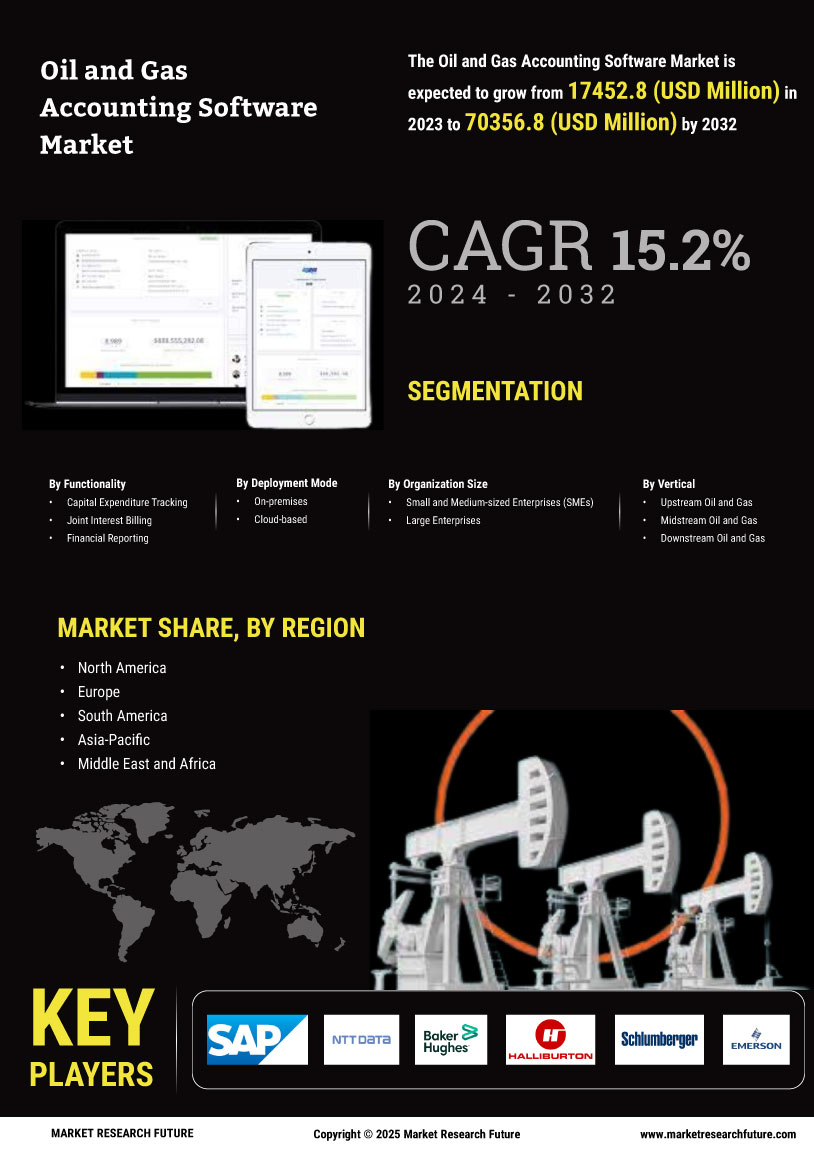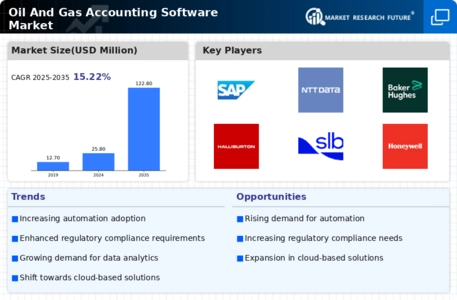Rising Demand for Operational Efficiency
The Oil And Gas Accounting Software Market is experiencing a notable surge in demand for operational efficiency. Companies are increasingly seeking software solutions that streamline financial processes, reduce manual errors, and enhance productivity. This trend is driven by the need to optimize resource allocation and improve overall financial management. As organizations face mounting pressure to cut costs and maximize profits, the adoption of advanced accounting software becomes imperative. According to recent data, the market for oil and gas accounting software is projected to grow at a compound annual growth rate of approximately 8% over the next five years, indicating a robust demand for solutions that facilitate operational efficiency.
Increasing Regulatory Compliance Requirements
The Oil And Gas Accounting Software Market is significantly influenced by the increasing regulatory compliance requirements imposed on the sector. Governments and regulatory bodies are enforcing stricter financial reporting standards and environmental regulations, necessitating robust accounting solutions. Companies must ensure that their financial practices align with these regulations to avoid penalties and maintain operational licenses. This has led to a heightened demand for accounting software that offers comprehensive compliance features, including audit trails and reporting capabilities. As the regulatory landscape continues to evolve, organizations are likely to prioritize investments in accounting software that can effectively manage compliance, thereby propelling market growth.
Expansion of Oil and Gas Exploration Activities
The Oil And Gas Accounting Software Market is poised for growth due to the expansion of oil and gas exploration activities. As new reserves are discovered and extraction technologies improve, companies are investing heavily in exploration and production. This increase in activity necessitates sophisticated accounting solutions to manage complex financial transactions and project costs effectively. The demand for software that can handle multi-currency transactions, joint venture accounting, and project-based financial management is on the rise. Consequently, the market for oil and gas accounting software is likely to experience significant growth as companies seek to enhance their financial management capabilities in response to expanding exploration efforts.
Technological Advancements in Software Solutions
Technological advancements play a pivotal role in shaping the Oil And Gas Accounting Software Market. Innovations such as artificial intelligence, machine learning, and blockchain technology are being integrated into accounting software, enhancing data accuracy and security. These technologies enable real-time data processing and analytics, allowing companies to make informed financial decisions swiftly. The incorporation of advanced features, such as automated reporting and predictive analytics, is becoming increasingly prevalent. As a result, organizations are more inclined to invest in sophisticated accounting solutions that not only meet current needs but also adapt to future challenges, thereby driving growth in the market.
Growing Focus on Sustainability and Environmental Impact
The Oil And Gas Accounting Software Market is witnessing a growing focus on sustainability and environmental impact. Companies are increasingly required to report on their environmental performance and sustainability initiatives, which necessitates specialized accounting software. This trend is driven by both regulatory pressures and consumer demand for transparency in environmental practices. Accounting software that incorporates sustainability metrics and reporting capabilities is becoming essential for organizations aiming to enhance their corporate social responsibility. As the emphasis on sustainability intensifies, the market for oil and gas accounting software is expected to expand, catering to the needs of companies striving for environmentally responsible operations.


















Leave a Comment